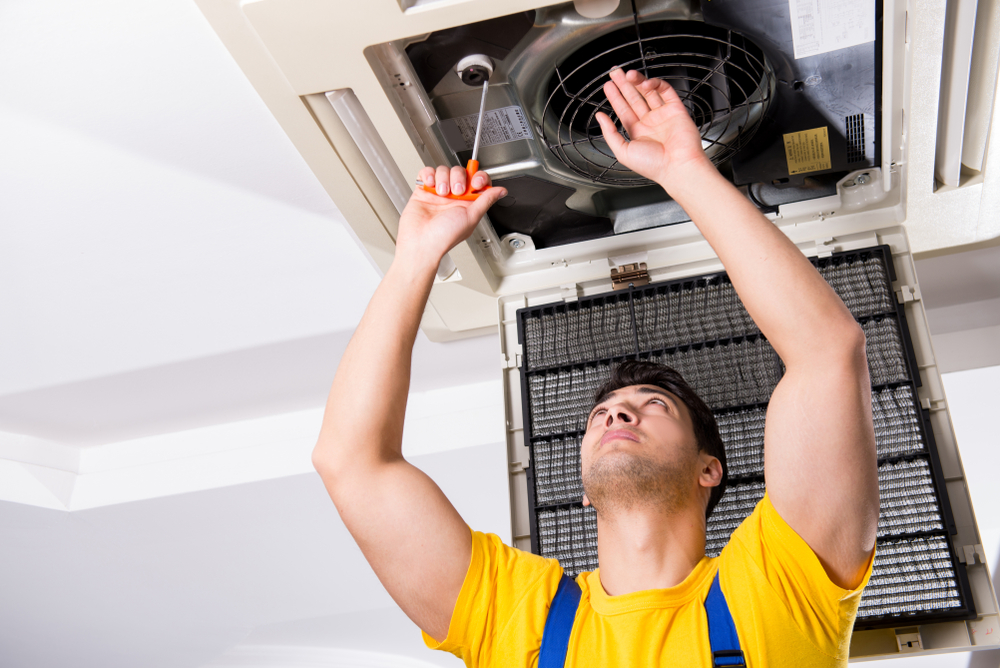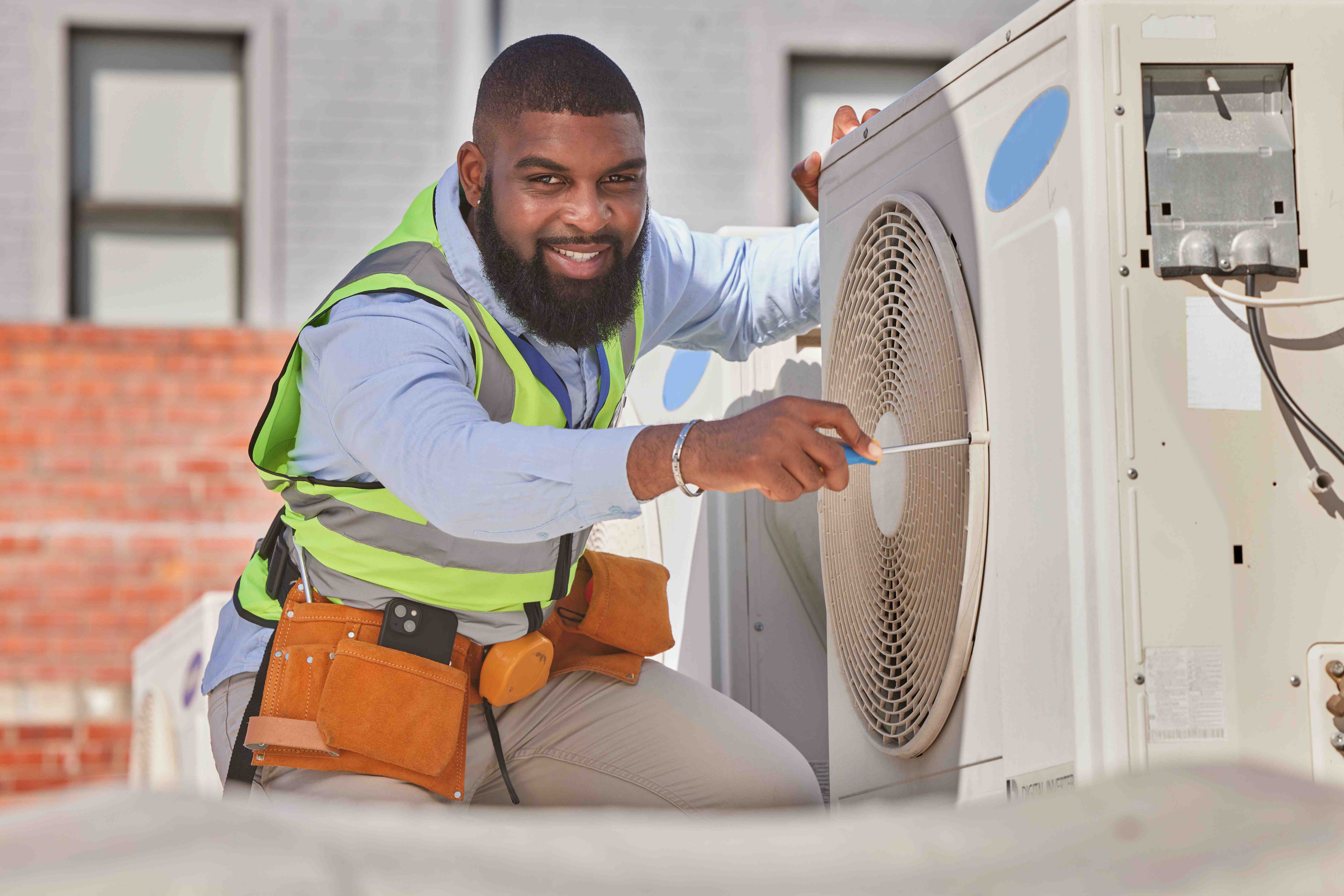How a Heatpump and Heater Job Together to Optimize Your Home's Home heating Effectiveness
Understanding just how a heatpump and furnace work together is important for homeowners looking for effective heating remedies. Each system has its staminas, offering a well balanced technique to home comfort. The warmth pump succeeds in moderate temperature levels, while the heating system delivers quick warmth throughout extreme cold. This synergy not just decreases energy prices however additionally boosts the life-span of both devices. What aspects influence this collaboration, and how can homeowners optimize their advantages?
Understanding Warmth Pumps: Exactly How They Function
Although lots of people may be not familiar with their inner functions, warmth pumps play a necessary role in modern-day heating unit. These gadgets run by moving heat from one place to an additional, utilizing the concepts of thermodynamics. In colder months, a warmth pump removes heat from the outside air, ground, or water, and transfers it inside to warm up the home. Alternatively, during warmer months, it can reverse the process, working as an a/c unit by expelling heat from inside to the outside.Heat pumps contain an evaporator, compressor, expansion, and condenser shutoff. The cooling agent within the system absorbs heat as it vaporizes at reduced temperature levels and stress. The compressor then enhances the stress and temperature level of the refrigerant, allowing it to release warm as it condenses. This reliable process can greatly minimize power intake contrasted to typical home heating approaches, making heatpump a sustainable choice for climate control in homes.
The Role of Furnaces in Home Home Heating
Heaters play an essential role in home heating by providing a reputable source of warmth throughout the cooler months. They run by producing heat through burning or electrical resistance, distributing it throughout the home through ducts or glowing systems. The effectiveness of a furnace is typically determined by its Yearly Gas Use Effectiveness (AFUE) rating, which shows just how successfully the system transforms gas right into heat.Furnaces can make use of different energy resources, consisting of gas, oil, propane, or electrical energy, permitting homeowners to pick the most ideal choice for their needs. Unlike warm pumps, which may battle in extreme chilly, furnaces preserve regular performance, guaranteeing that interior temperatures stay comfortable despite exterior conditions. In addition, contemporary heaters commonly come geared up with innovative technology, such as smart thermostats and variable-speed blowers, boosting their efficiency and responsiveness. This adaptability makes heaters a critical part in comprehensive home heating approaches.

Benefits of Making Use Of Both Equipments With Each Other
Integrating the staminas of both furnaces and heatpump can bring about a much more reliable and effective home heating service. Utilizing both systems permits house owners to make use of the heatpump's power effectiveness during milder temperature levels while depending on the heating system for even more severe cold conditions. This dual strategy can considerably decrease power expenses, as heat pumps take in less electrical energy than conventional home heating techniques when temperatures are moderate.Additionally, utilizing both systems together can boost comfort degrees in the home. Heat pumps can give consistent, also heating, while heaters can rapidly elevate ambient temperatures when required. The combination of both systems can extend the life-span of tools by minimizing wear and tear on each unit, as they share the workload. Eventually, homeowners can take pleasure in a well balanced, affordable home heating solution that changes flawlessly to varying weather condition problems, guaranteeing a cozy and welcoming home throughout the winter months.
Exactly How Warmth Pumps and Furnaces Enhance Each Other
They create a complementary home heating system that maximizes efficiency and comfort when home owners incorporate warmth pumps and heaters. Heatpump run by moving warmth from the outdoors air or ground, making them very reliable in modest environments. They succeed during milder temperatures, providing cost-effective heating. Conversely, furnaces generate heat through burning or electrical resistance, delivering strong, immediate warmth during severe cool conditions.The mix of these 2 systems enables for dynamic modifications based on temperature variations. Throughout warmer months or milder winter months days, the heatpump can take the lead, saving energy and decreasing costs. As temperatures decline, the heater can effortlessly engage, guaranteeing regular heat throughout the home. This harmony not just maximizes energy usage yet likewise improves the life expectancy of both systems, as each unit runs within its ideal efficiency array. With each other, they produce a balanced setting that adapts to differing climate demands.
Maximizing Effectiveness: Tips for Homeowners
Homeowners can boost their heating performance with several functional techniques. Establishing a normal maintenance schedule, incorporating wise thermostat technology, and applying reliable insulation and sealing remedies are essential actions. These procedures not just boost convenience yet likewise decrease energy prices.
Regular Upkeep Schedule
To ensure optimal heating performance, establishing a normal maintenance timetable is vital for any kind of home. Property owners need to prioritize regular inspections of both warm pumps and furnaces to determine peak efficiency. This consists of changing air filters every one to 3 months, as clogged filters can considerably lower efficiency. Furthermore, organizing expert maintenance at the very least once a year enables professionals to determine and resolve potential issues prior to they rise. Property owners must additionally cleanse the heat pump's outside device to avoid debris buildup that can prevent air movement. By sticking to a normal upkeep schedule, house owners not just improve their home heating systems' performance yet also extend their lifespan, resulting in higher comfort and minimized power expenses throughout the chillier months.
Smart Thermostat Combination
Integrating a smart thermostat right into a home furnace can substantially boost energy efficiency, especially as it enables specific control over temperature level settings. These devices can find out the home owner's routine and preferences, automatically readjusting the temperature level to maximize convenience while reducing power usage. They can lower home heating during times when the home is empty, minimizing unnecessary intake. Lots of smart thermostats likewise provide real-time energy usage information, enabling home owners to make educated choices about their home heating practices. In addition, remote gain access to via mobile phone apps enables customers to readjust setups from anywhere, ensuring the home is cozy upon return. Overall, clever thermostat integration not just enhances comfort however substantially contributes to energy savings and effectiveness.
Insulation and Securing Solutions
Smart thermostats play a critical role in power performance, but their efficiency can be greatly enhanced by appropriate insulation and securing solutions. Property owners need to focus on insulating walls, floorings, and attics to reduce heat loss. Top quality insulation here products, such as spray foam or fiberglass, can substantially improve thermal resistance. Additionally, sealing gaps around doors, windows, and ducts avoids chilly air seepage and warm getaway. Weatherstripping and caulking are reliable approaches for addressing these leakages - ductless mini splits. Regular evaluations for air leaks, along with using blower door examinations, can aid recognize trouble locations. By link investing in insulation and sealing, property owners can optimize the performance of their home heating systems, inevitably leading to minimized power usage and lower utility costs
Usual Misconceptions Regarding Warm Pumps and Furnaces
What mistaken beliefs surround heatpump and heaters? Several people wrongly believe that heatpump are ineffective in cooler climates. In reality, modern-day warmth pumps are developed to operate successfully even in reduced temperatures, providing dependable home heating throughout wintertime. Another usual myth is that furnaces are always extra effective than heat pumps. This depends on the certain energy resources and efficiency scores of the units in concern. Some may likewise think that utilizing both systems simultaneously is unneeded, but as a matter of fact, this mix can optimize home heating effectiveness, especially throughout extreme weather. Furthermore, individuals typically think that heatpump call for consistent maintenance, when in reality, they have comparable maintenance needs to typical heater. By exposing these misconceptions, homeowners can make more educated choices concerning their heating options, eventually leading to enhanced comfort and power efficiency in their homes.
Maintenance Factors To Consider for Combined Equipments

Regularly Asked Questions
Can Heat Pumps Work Efficiently in Exceptionally Cold Climates?
Heatpump can have a hard time in exceptionally cold climates because of minimized performance and heat extraction restrictions. Nonetheless, advancements in technology have caused versions made for better performance in such conditions, improving their practicality in extreme settings.
How Much Time Do Warmth Pumps and Furnaces Typically Last?
Heatpump generally last 15 to directory twenty years, while heating systems have a life-span of 15 to three decades. Normal upkeep can prolong their long life, ensuring reliable procedure and lowering the demand for early replacements.

What Is the Ordinary Expense of Installing Both Solutions?
The average expense of installing both a warmth pump and a heater commonly varies between $5,000 to $10,000 - furnace replacement. Variables influencing this cost include system size, setup complexity, and local labor prices
Are There Tax Obligation Motivations for Using Energy-Efficient Home Heating Equipments?
Many house owners ask about tax obligation motivations for energy-efficient heating systems. Different government and state programs often use rebates or credit scores, encouraging the adoption of lasting modern technologies to reduce energy usage and advertise ecological responsibility.
How Do I Select the Right Dimension Warmth Pump and Furnace?
Selecting the ideal dimension heatpump and heating system includes calculating the home's square footage, taking into consideration insulation top quality, and examining neighborhood climate. Consulting a professional can ensure suitable system efficiency and power performance based upon specific needs. ductless mini splits. Understanding just how a heat pump and heating system work with each other is crucial for home owners seeking efficient home heating remedies. In chillier months, a heat pump essences warm from the outdoors air, ground, or water, and transfers it indoors to warm the living area. When homeowners incorporate warm pumps and furnaces, they create a corresponding home heating system that optimizes effectiveness and convenience. Heat pumps run by transferring warmth from the outside air or ground, making them very efficient in modest climates. Warmth pumps can have a hard time in very cold climates due to lowered performance and warmth removal restrictions